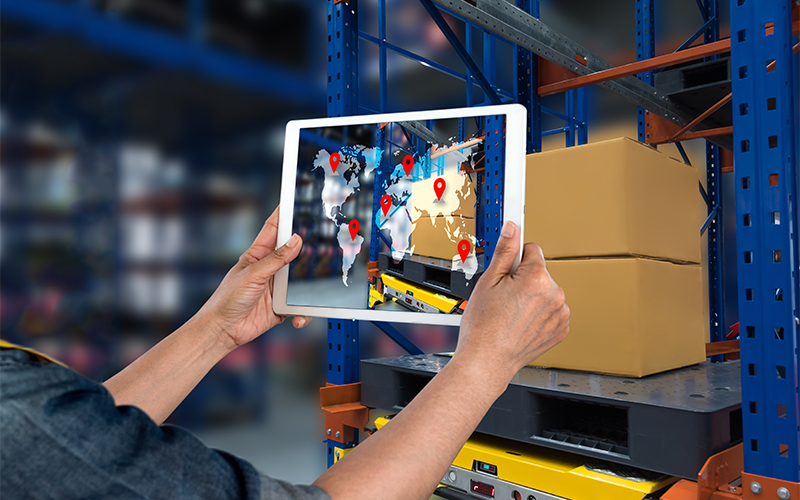Supply Chain
Ten ways to optimise the eCommerce supply chain
Recent estimates indicate the following global e-commerce trends:
- The Indian e-commerce market is expected to grow to $111.4 billion by 2025.
- Latin America witnessed a 25% rise in e-commerce sales, drawing an $85 billion figure in 2021.
- The US e-commerce market expects to reach over $875 billion this year.
- China continues to lead the global e-commerce market with 52.1% of all online retail sales.
With every market exhibiting a double-digit e-commerce growth, these trends show no signs of slowing down. This growth is attributed to building resilient and optimised e-commerce supply chains in response to the COVID-19 situation.
Supply chain management in eCommerce
In e-commerce, supply chain management is all about streamlining the flow of information, resources, and money to achieve optimum results. Starting from raw materials to end users, the components of an e-commerce supply chain are:
- Producers
- Suppliers
- Vendors
- Logistics
- Distribution centres
- Fulfilment companies
- Transportation services
Each component can influence supply chain management in e-commerce and can be detrimental to end-user experience and expectations. Therefore, it is critical for your business to optimise supply chain management in e-commerce marketplace management service channels.
Ten ways to optimise eCommerce supply chain
Although your supply chain may be running smoothly, inventory is arriving on time, and customers are receiving their orders, the fact is that there is always room to improve your supply chain management. Optimising the e-commerce supply chain helps move your products seamlessly through multiple hands - from the manufacturers, warehouses, retailers, distributors, and then the customers. Data-driven, fast-paced, and responsive supply chains help project an increase in online sales. Here are some proven ways to optimise your supply chain management in e-commerce:
- Solidify communication between every link of your supply chain:
- Centralise management operations:
- Adapt to integrate evolving mobile and internet tech:
- Outsource redundant processes:
- Deliver best-quality products:
- Focus on customer expectations and experience:
- Leverage analytics tools:
- Create a responsive supply chain:
- Plan meticulously:
- Avoid supply chain complacency:
The flow of information between different supply chain links is critical for e-commerce supply chain management. Clear communication between parties - such as suppliers, manufacturers, warehouses, and distributors - is crucial for eliminating any miscommunication or confusion and fulfilling customers’ orders on time.
Centralised management of the e-commerce supply chain is an extension of the previous point to ensure every link of your e-commerce supply chain works in unison. A lack of communication and coordination between links can be catastrophic for your supply chain. Centralised management software solutions help you in achieving this goal.
Mobile or internet technologies come in handy to facilitate the flow of information within the supply chain and manage interactions with customers. Leverage these to offer a personalised shopping experience for your customers and optimise inventory to drive profit while reducing costs.
Do not overburden yourself by trying to complete every supply chain process in-house. This can hurt your business by stretching your resources thin and taking attention away from your core business process. You can outsource supply chain processes, such as warehousing, order fulfilment, or logistics, since these processes are time-consuming. Outsourcing these can help you focus on your core business competencies.
Ensure that you are delivering the best quality products at competitive prices and profitable costs to optimise your e-commerce supply chain. Audit your suppliers and renegotiate with them to make sure you are exceeding customer expectations while staying profitable.
Focusing on your customers - their expectations, experiences, and demands - allows you to understand the strengths and weaknesses of your supply chain and anticipate future trends. You can use these insights to build a flexible and resilient supply chain for optimised supply chain management.
Analytics tools can help you analyse this information and draw actionable insights. Leverage these tools to understand your customers better and guide strategic business decisions accordingly.
Understanding your customers and anticipating a shift in their expectations is a great way to build an agile and responsive supply chain in e-commerce. Use information from POS systems and social media platforms to forecast demand changes and evolving market trends to quickly respond to these changes without reorganising your supply chain or inventory too much.
Planning is an integral aspect of supply chain management irrespective of the stages in an e-commerce supply chain. It can help you avoid, manage, or mitigate any hiccups along the way and protect your business from accumulating unnecessary costs.
Once you feel you have an optimised e-commerce supply chain, it is not the time to sit back and relax. Continue strengthening your supply chain to stay competitive and achieve better business outcomes.
For organisations on the digital transformation journey, agility is key in responding to a rapidly changing technology and business landscape. Now more than ever, it is crucial to deliver and exceed on organisational expectations with a robust digital mindset backed by innovation. Enabling businesses to sense, learn, respond, and evolve like a living organism, will be imperative for business excellence going forward. A comprehensive, yet modular suite of services is doing exactly that. Equipping organisations with intuitive decision-making automatically at scale, actionable insights based on real-time solutions, anytime/anywhere experience, and in-depth data visibility across functions leading to hyper-productivity, Live Enterprise is building connected organisations that are innovating collaboratively for the future.
How can Infosys BPM help?
Infosys BPM Digital Supply Chain Services offer end-to-end solutions that enable agile and responsive supply chains, including:
- Supply chain diagnostics
- Supply chain shared services advisory
- Supply chain control
- Forecasting
- Inventory optimisation






